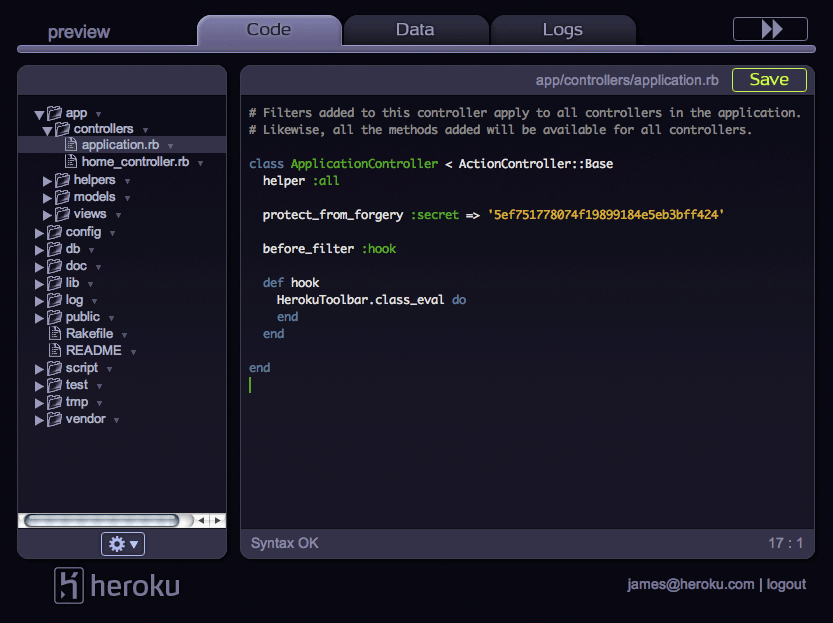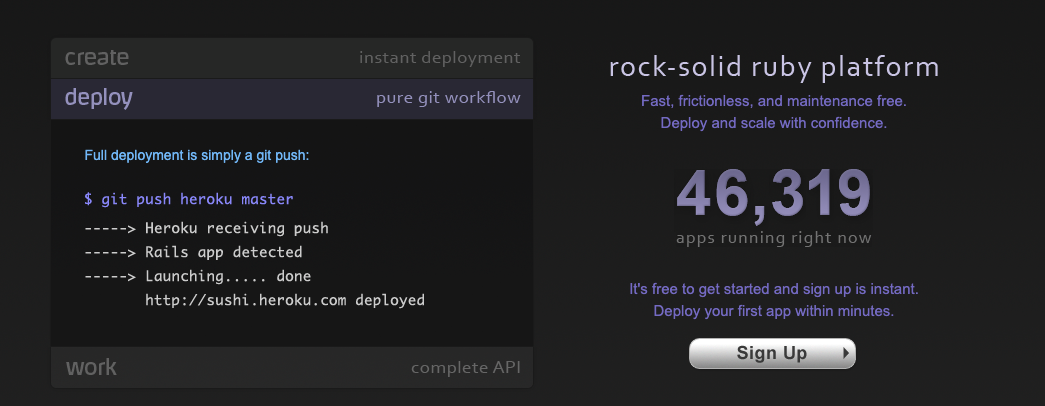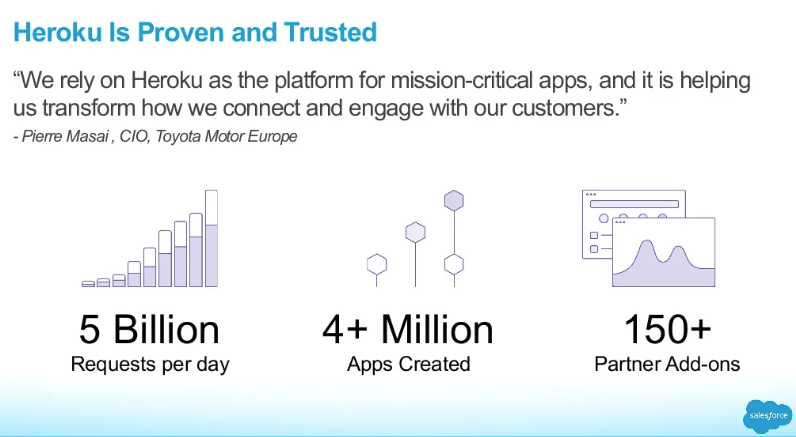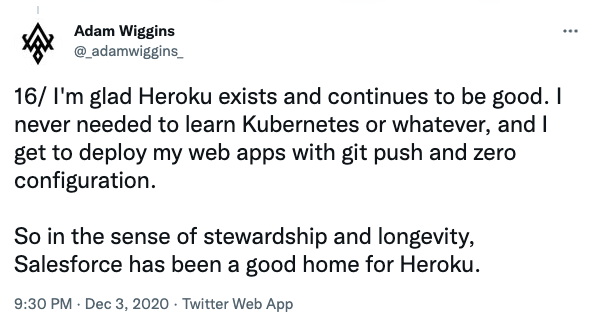Heroku’s free tier legacy: The shoulders we stand on 15 years later
On August 25, 2022, we learned the shocking news that free Heroku Dynos, Heroku Postgres and Heroku Data for Redis will no longer be available and existing services will either need to upgrade to a paid service or find another hosting solution by November 28, 2022.
Since its conception, Heroku has changed the way developers, hobbyists, students, and indie hackers deploy applications. As we face the end of an era, we want to take the time to reflect on Heroku's story and the legacy of Heroku’s free tier.
Heroku: the trailblazer's (PaaS) path
Imagine it's 2006 and Shakira's Hips Don't Lie is one of the top songs of the year. AWS just launched EC2, making it easier to provision servers. If you wanted to deploy an application, you would need to package your app, spawn multiple virtual machines and databases, handle load balancing and failover, monitor the health of your instances, perform backups, manage observability, and so much more.
We are talking about 2006, but yes: today you still need to do all of this infrastructure management and more if you decide to self-host. Yikes, or, as the French say, courage.
As Lee Robinson recounts in The Story of Heroku, Ruby on Rails is the framework to build monolithic apps. While app development productivity is up, app deployment remains challenging and slow because you had to deal with servers, operating systems, and everything to do with the administration of systems.
As one of the Heroku founders, Adam Wiggins, put it in this 2012 interview, “Every couple of months we would finish a new customer project that we needed to deploy. Every time we had to buy servers and do all the route work of setting up an app. And every time we asked, ‘Hasn’t someone solved this problem yet?’ Eventually, we decided to solve it ourselves.”
The end of this quote is the start of Heroku’s journey. In 2007, Wiggins with James Lindenbaum and Orion Henry set off to create Heroku, at the time an in-browser code editor and deployment platform that drastically simplified building and deploying Ruby web applications.
 From TechCrunch February 7, 2008.
From TechCrunch February 7, 2008.
In October 2007, Heroku published a blog post inviting users to sign up to join the waitlist. By mid-November, over 1000 people had signed up and positive feedback was flowing in with early adopters expressing their appreciation:
"This is exactly what I was looking for right now. I’ve started teaching myself ruby on rails, and it’ll be fantastic to be able to have something online to mess around with." - Micah
OH – MY – GOD, Heroku! It’s absolutely great. In my opinion, it’s really a revolution in Rails development." – Chris
Boy this looks awesome! When you see it, you go… 'Well, of course! Why didn’t I think of that?'" – Dirk
Within months of launching a private beta, Heroku began to grow quickly as more and more developers wanted access to less painful deployments. By the beginning of 2009, Heroku had publicly released the first version of the platform and had over 20,000 apps running on it. One year later, they had over 44,000 apps running.

During this time, the whole PaaS market was also growing and evolving. By Winter 2008, Heroku had joined Y Combinator and, in the same year, Google decided to jump on the PaaS trend and released Google Apple Engine. Shortly after, Salesforce acquired Heroku in December 2010 for $212 million.
Ah yes, remembering the Salesforce acquisition
When Lindenbaum shared the news that Heroku agreed to be acquired, he explained Heroku's vision was for a larger number of enterprise apps to use the platform.
This vision required stewardship from a proven leader. One with a deep and experience-based understanding of the PaaS market and a demonstrated track record for earning and maintaining a reputation of trust and dependability in the eyes of their customers.
For Heroku this was Salesforce. In Lindenbaum's words, "Salesforce.com is the original cloud company. They convinced the enterprise world to consume software as a service before Gmail, Basecamp, or Facebook existed. They created one of the world’s first platforms-as-a-service and helped popularize the term. They get it."

He goes on to say, "We have long been fans of salesforce.com due to the unusual philosophies they share with us," explaining that, "Salesforce.com is religious about not selling software for private cloud use, and so are we." He also cites Heroku and Salesforce's shared commitment to the value added by abstraction and multi-tenancy.
The admiration was mutual, as expressed by Salesforce founder Parker Harris in his blog post What I Love About Heroku.
The Salesforce acquisition is remembered by some as a bitter event. While some perceive it as the beginning of Heroku's slowed innovation, the acquisition saw the arrival and improvement of many of Heroku's beloved features: support of Postgres and additional languages, like Clojure, Scala, Python, Java and Node.js.
Ten years after the acquisition, Wiggins shared his reflections in this Twitter thread. He described where Heroku was as a company at the time of the acquisition, what he and his cofounders wanted from it, and the significance this acquisition had for Y Combinator.
Wiggins addressed what went well with the acquisition: Salesforce's total support for Heroku's team and customers, Heroku gained legitimacy for enterprise sales and shipped a heap of new features and improvements.

He was also frank about where it did not meet both parties' expectations, pointing to considerable divergent values and not as much strategic alignment as hoped.
When wrapping up his reflections he confirmed that he is an active user and customer of Heroku, stating that the backend of his new business Muse App runs there. He also affirmed, "in the sense of stewardship and longevity, Salesforce has been a good home for Heroku."

15 years of Heroku’s free tier
Many describe their first time using Heroku as magical: you git push heroku main and Heroku would automatically build and deploy your code for you. To this day, people appreciate Heroku because the learning curve isn’t steep, the CLI is intuitive, and key development technologies like Git and Postgres come built-in.
Moreover, powerfully cool features like Review Apps was a great way to propose and test code changes while Heroku Add-ons seamlessly provided you the tools and services to develop and enhance your apps.
It has almost been 15 years since Heroku first opened its platform in 2007 and 12 years since Heroku was acquired by Salesforce. From the get-go, Heroku offered a free tier that allowed developers, founders, hobbyists, students, and indie hackers to push their code into production.
For business use cases, the premise was pretty straightforward. With Heroku’s free tier, you could get your prototype or PoC into production relatively quickly. If your app needed to scale, it constituted a type of win-win for you and Heroku: your business idea was taking off and Heroku was going to charge you to scale and access more mission-critical features.
Innumerable projects turned to Heroku throughout the years, and, similarly, countless startups chose to build on Heroku, essentially betting their business on them. Just taking a glimpse back in time with the Wayback Machine, we can see these were Heroku’s success stories in 2014. Heroku's 2015 pitch deck features Toyota, Lyft, Instacart, Westfield, Groupon, Coinbase, and more.

Today, these are Heroku’s success stories including the likes of Unsplash, Bonobos, and Clear Channel Outdoor. Major players like Algolia and Sisense have shared their migration stories away from Heroku and are just the tip of the iceberg of the many projects and businesses that first got their prototype and PoC into production thanks to the platform.
August 25: The email and blog post heard around the world
Given Heroku’s long history of providing reliable and quality free services, people were shocked to receive the news that free Heroku Dynos, Heroku Postgres, and Heroku Data for Redis will no longer be available starting November 28, 2022.
Moreover, this news does not just impact new accounts, but also it affects those who already use free Dynos and Heroku Data Add-ons. These users will either need to upgrade to a paid plan or find another solution before the November 28, 2022 sunset.
The news sparked a windfall of reactions as users from all over the world came forward to share their immediate thoughts and feelings. Some rallied with Heroku’s decision to focus on paid users. Others echoed Heroku's concern for investing significant resources to mitigate abuse and fraud on the platform. You can see the extent of their abuse operations by watching their 2020 BlackHat session or reading the print version of Heroku Abuse Operations: Hunting Wolves in Sheep's Clothing.
A lot vocalized their strong feelings, saying Heroku broke a promise and pulled the rug out from them. Many reflected on how this is the end of an era, sharing their sentimental experiences about what Heroku’s free tier enabled them to do.
When we look back at this Fireside Chat that took place in 2012, Lindenbaum, one of Heroku’s cofounders and then Heroku’s Chief Strategy Officer, responds to a question about the direction of Heroku at the time. His goal was to focus on fostering complex applications on the platform. 10 years later, this vision returns to the foreground.
Saying thanks to Heroku as we move on to the next chapter
Heroku’s free tier paved the way for countless developers who experienced the magic of app deployment. As free resources sunset on the Heroku platform, let us take time to pay our respects to everything Heroku accomplished, and in turn everything the tech world accomplished thanks to their long-standing and generous free tier.
What they built opened a world of new possibilities for app development. Developers could spend less time managing the underlying infrastructure and spend more time doing what they wanted, developing their actual applications.
Standing on Heroku's shoulders
For years, Heroku changed how we could deploy applications. In their wake stands a whole new wave of platforms reimagining the possibilities of serverless.
If you're looking for a platform to run and deploy your apps globally, give Koyeb a try and discover how we are revolutionizing serverless with our Heroku comparison.
Koyeb is a developer-friendly platform that provides the fastest way to run and deploy your apps globally. We do not pretend to be as mature as Heroku is today yet, but we are on our way. It is early days and we are a team of 8 just getting started. Want to join us? We are hiring.